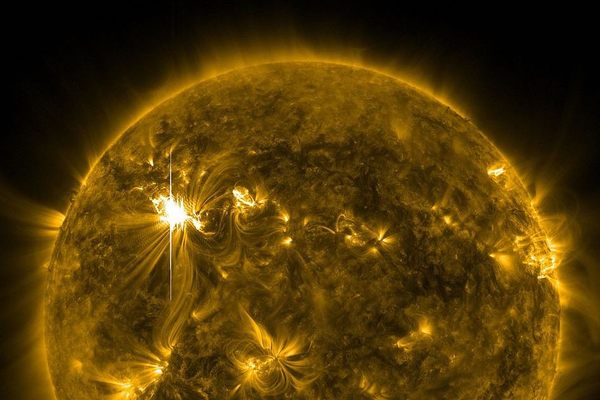A New Multilingual Sign Language Dictionary Looks to the Stars
Hoping to make education more accessible, the International Astronomical Union is compiling all the signs of outer space.

How did the universe begin? Clench your hands into fists, and line them up in front of you. Then throw them out to your sides, fingers outstretched. The motion should look like this:

Did you get it? Whether you know it or not, you have answered my question: You just said “big bang” in French Sign Language.

Over the past six years, a working group within the International Astronomical Union (IAU) has collected space-related signs from various sign languages. Earlier this month, they announced the result: a publicly accessible list of 47 common astronomical words, each translated into up to 31 sign languages, including Portuguese, Russian, and Finnish.

The project was inspired by a French Sign Language (LSF) astronomy dictionary, Les mains dans les étoiles, which was released in 2009. Compiled by a team led by Dominique Proust, an IAU member and an astrophysicist at the Paris Observatory, the guide collects about 300 astronomy-themed LSF signs, from “asteroid”—a combination of signs for a solar orbit, “detail,” and “rocks”—all the way to to “zenith,” an open hand held above the head with the opposite index finger pointing at it.
A few years later, the IAU created a working group, “Astronomy for Inclusion and Equity,” that aims to facilitate broad access to astronomical resources for underserved populations. One such group is the deaf community, which has historically experienced prejudice and discrimination, including outright censorship.
For example, in France, sign language was forbidden in schools for deaf people after the Milan Congress of 1880, explains Beatriz Garcia, a professor at the Institute of Technology in Detection and Astrophysics, and one of the leaders of the project, along with Proust and the University of Valencia’s Amelia Ortiz-Gil. “The progress of signs was completely stopped for almost [an entire] century.” As a result, entire planets and ideas never got their own signs.
As always, if there’s no word for something, it’s harder to talk about it. Right now, speakers of sign language who run into such limitations are left to take things a letter at a time—often an unwieldy proposition. (As Kate Meredith, an astronomy outreach specialist unaffiliated with this particular project, put it to Newsweek, “Imagine fingerspelling out ‘electromagnetic spectrum.’”)
For Les mains dans les étoiles, a team of deaf collaborators worked to fill these gaps, coining new signs for existing objects and concepts. Their proposed sign for “quasar,” for example, combines the signs for “same,” “galaxy,” “energy,” and “power.” As the dictionary’s introduction explains, it essentially describes the imaginary act of physically discovering a quasar: “I see a small brilliant source of light in the sky; I open it to see the interior; I am amazed to see the central area of a galaxy enclosed in this space, [and its] considerable energy.”
So far, Garcia says, the French dictionary has been a success, used by schools for the deaf and public education programs. As a result, the IAU group is working to provide similar resources for many other languages. Over the past few years, they have translated the LSF dictionary into American Sign Language and Spanish Sign Language, and this latest project aims to expand the concept even further.

The list is still very much in progress. “If you look at the sheet, there are words without signs,” Garcia says. They hope to attract local volunteers to address some of these gaps. Along with providing resources for speakers of those languages, Garcia continues, a more complete list would also enable cross-language comparisons.
This could help accelerate the IAU group’s ultimate goal: an international sign language for astronomical words. Like a very specific Esperanto, such a language would allow experts from around the globe to communicate with each other. “We know this could be very difficult, but it is our dream,” says Garcia.
In the meantime, Garcia’s favorite sign? “Without a doubt, ‘astronomy,’” she says. Like all signs, it differs between languages—22 are pictured at the top of this article. But in many, it involves two hands coming together to form a telescope, looking off into the unknown.










Follow us on Twitter to get the latest on the world's hidden wonders.
Like us on Facebook to get the latest on the world's hidden wonders.
Follow us on Twitter Like us on Facebook